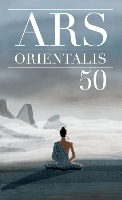
ARS Orientalis
Scope & Guideline
Advancing Understanding in Archaeology and Cultural Studies
Introduction
Aims and Scopes
- Interdisciplinary Approaches to Asian Art:
The journal emphasizes a multidisciplinary perspective, integrating art history, cultural studies, anthropology, and digital humanities to analyze and interpret artworks and artifacts. - Focus on Historical Contexts:
It critically examines the historical, social, and political contexts that shape artistic practices and cultural production across Asia. - Engagement with Contemporary Issues:
The journal highlights the relevance of historical art forms in contemporary discussions, including issues like identity, globalization, and environmental concerns. - Exploration of Material Culture:
A significant focus on material culture, including the reuse, recycling, and repurposing of artifacts, is prevalent, reflecting broader themes in sustainability and cultural memory. - Digital Art History and Technology:
There is a growing interest in the incorporation of digital tools and methodologies in art historical research, facilitating new ways to engage with and present Asian art.
Trending and Emerging
- Environmental and Sustainability Perspectives:
A notable trend is the exploration of environmental themes, particularly in relation to material culture, as seen in discussions around the reuse and recycling of artifacts, which resonates with global sustainability efforts. - Digital Humanities and Art History:
The integration of digital tools and methodologies is gaining momentum, with increasing research on how digital platforms can enhance the accessibility and understanding of Asian art. - Cross-Cultural Interactions and Globalization:
Emerging themes focus on cross-cultural exchanges and the impact of globalization on artistic practices, reflecting a more interconnected view of art history. - Cultural Memory and Historical Recontextualization:
There is a rising interest in how historical artifacts and narratives are reinterpreted in contemporary contexts, addressing themes of memory, identity, and the afterlives of objects. - Emphasis on Social Issues and Activism:
Recent publications increasingly engage with social issues, including xenophobia and the effects of war, showcasing how art serves as a medium for activism and social commentary.
Declining or Waning
- Traditional Art Historical Narratives:
There appears to be a decline in papers focusing solely on traditional narratives of art history without contextualizing them within broader cultural or contemporary frameworks. - Focus on Isolated Regional Studies:
Research that concentrates exclusively on isolated regional studies without connecting to wider Asian or global contexts is becoming less common, suggesting a shift towards more integrated approaches. - Studies Lacking Interdisciplinary Engagement:
Papers that do not incorporate interdisciplinary methodologies or insights are appearing less frequently, indicating a preference for research that bridges multiple fields. - Reduction in Emphasis on Historical Art Techniques:
There seems to be a waning interest in detailed studies centered solely on historical techniques of art-making without addressing their relevance to modern practices or cultural discourse. - Minimized Discussion of Colonial Art Histories:
Research specifically focused on colonial art histories, while still relevant, is being overshadowed by more contemporary themes that address post-colonial perspectives and global interactions.
Similar Journals
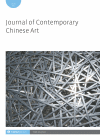
Journal of Contemporary Chinese Art
Chronicling the Evolution of Contemporary Art PracticesThe Journal of Contemporary Chinese Art is a prestigious academic publication dedicated to advancing the discourse surrounding contemporary artworks and artistic practices in China. Published by INTELLECT LTD, this journal features insightful articles and research that catalyze discussions among scholars, practitioners, and students within the Visual Arts and Performing Arts fields. With an ISSN of 2051-7041 and an E-ISSN of 2051-705X, the journal operates without open access, yet remains a pivotal resource as reflected in its Q2 ranking in the 2023 category of Visual Arts and Performing Arts, positioning it within the 70th percentile on the Scopus Ranks. Covering a diverse range of topics from global influences on Chinese art to the socio-political dimensions of artistic expressions, the journal aims to foster a deeper understanding of contemporary cultural dynamics. Since its inception in 2019 and continuing through 2024, it has established itself as a critical platform for emerging voices and established experts alike, making it an essential read for anyone engaged in the study and appreciation of modern Chinese art.
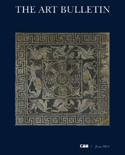
ART BULLETIN
Fostering Innovative Perspectives on Artistic ExpressionART BULLETIN is a prestigious journal dedicated to the fields of history and visual arts, published by Routledge Journals, Taylor & Francis Ltd. With a rich publication history dating back to 1945, this journal serves as a vital platform for scholarly discourse, presenting cutting-edge research and critical analyses that contribute to our understanding of the arts across various contexts. Despite its Q3 ranking in both the History and Visual Arts categories, the journal has managed to achieve notable stature among its peers, evidenced by its Scopus ranking, placing it in the top 20% for Visual Arts and in the top 25% for History. Scholars and students alike will find valuable insights and innovative perspectives within its pages, making it an essential resource for anyone invested in the academic exploration of art and cultural history. Although currently not open access, the journal is committed to fostering an informed community by disseminating works that encourage scholarly engagement and creative thought.

GESTA-INTERNATIONAL CENTER OF MEDIEVAL ART
Navigating the Depths of Medieval Artistic HeritageGESTA-INTERNATIONAL CENTER OF MEDIEVAL ART is a distinguished journal published by University of Chicago Press, focusing on the intricate and rich tapestry of medieval art. With the ISSN 0016-920X and E-ISSN 2169-3099, it serves as a vital resource for scholars and enthusiasts alike, examining the evolution and influence of visual arts during the medieval period. This journal is indexed in Scopus, showcasing its ranking of #188 out of 667 in the field of Arts and Humanities, placing it within the 71st percentile. Moreover, it holds a notable Q3 categorization in Visual Arts and Performing Arts as of 2023, reflecting its significant contribution to academic discourse. Although it is not an open-access journal, GESTA provides invaluable insights and critical analyses that engage a broad audience including researchers, professionals, and students dedicated to medieval studies. With publication converging from 2002 to 2006 and continuing from 2008 to 2024, GESTA is committed to promoting a deeper understanding of art's historical contexts, making it an essential addition to any academic library.
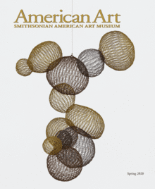
American Art
Showcasing Innovative Research in American ArtAmerican Art, published by University of Chicago Press, is a leading journal in the fields of cultural studies and visual arts, with a notable impact in both academic and professional circles. Since its inception in 1996, the journal has provided a robust platform for scholarly discourse, showcasing a diverse array of research that examines the evolution, context, and significance of American art and its cultural implications. With an impressive Q2 ranking in Visual Arts and Performing Arts and a Q3 ranking in Cultural Studies for 2023, American Art remains a vital resource for researchers, professionals, and students alike, facilitating a deeper understanding of the intricacies within American artistic practices. While currently not offering open access, the journal is accessible through various academic databases, ensuring reach to a wide audience dedicated to the intersection of art and culture. The journal's commitment to innovative scholarship makes it an indispensable resource for anyone seeking to explore the dynamic landscape of American art.
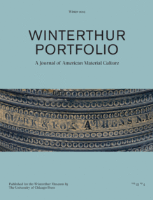
WINTERTHUR PORTFOLIO-A JOURNAL OF AMERICAN MATERIAL CULTURE
Exploring the Threads of American Identity through Material CultureWINTERTHUR PORTFOLIO: A Journal of American Material Culture, published by University of Chicago Press, is an esteemed academic journal dedicated to the exploration and analysis of American material culture. With its ISSN 0084-0416 and E-ISSN 1545-6927, this journal provides a robust platform for interdisciplinary scholarship that examines historical artifacts, their cultural contexts, and their significance in understanding American identity. Despite facing a challenging competitive landscape, as reflected in its Q3 rankings in History, Museology, and Visual Arts and Performing Arts, WINTERTHUR PORTFOLIO remains a vital resource for researchers, professionals, and students alike, fostering engagement with material culture studies since its inception in 1979. Though it does not offer Open Access options, the journal's rich repository of research and critical theories provides invaluable insights across multiple disciplines, making it an essential tool for those committed to advancing the field.

Umeni-Art
Advancing Knowledge in the Visual and Performing ArtsUmeni-Art is a prominent journal in the field of visual arts and performing arts, published by the Institute of Art History, Academy of Sciences, Czech Republic. With its ISSN 0049-5123 and E-ISSN 1804-6509, the journal has established itself as a critical platform for scholarly discourse and artistic expression since its inception in 2002. Although currently classified in Q4 within the Arts and Humanities category, it aims to elevate the understanding and appreciation of the arts through rigorous research and innovative perspectives. The journal's Scopus ranking places it at Rank #573/667, reflecting its growing contribution to the field and expanding reach within the artistic community. With a focus on fostering collaboration among researchers, practitioners, and students, Umeni-Art seeks to enrich the academic landscape with significant findings and discussions that inspire future research and creative endeavors. While it does not offer open access, the journal remains a valuable resource for those vested in exploring the dynamic interplay between art, culture, and society in the contemporary context.

Boletin de Arte-UMA
Fostering Global Dialogue in Visual and Performing ArtsBoletin de Arte-UMA is a distinguished academic journal published by the University of Malaga, Department of History of Art, focusing on the rich interplay between history, visual arts, and performing arts. Operating under an Open Access model since 2013, this journal ensures that valuable research is freely available for scholars and practitioners worldwide. With an impact factor currently reflecting its academic rigor through its Q2 ranking in History and Q1 ranking in Visual Arts and Performing Arts, Boletin de Arte-UMA serves as a vital platform for cutting-edge research, critical analysis, and the promotion of cultural heritage studies. Based in Malaga, Spain, the journal not only provides insights into its thematic scope but also fosters a global dialogue among researchers, professionals, and students passionate about the visual and performing arts.
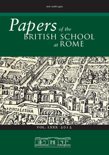
Papers of the British School at Rome
Bridging Disciplines in the Heart of ItalyPapers of the British School at Rome, published by Cambridge University Press, is a prestigious journal that has been contributing to the fields of archaeology, history, and visual arts since its inception in 1902. With an ISSN of 0068-2462 and an E-ISSN of 2045-239X, this journal serves as an essential platform for innovative research and scholarly dialogue that explores the rich cultural heritage of Rome and its surrounding areas. The journal is ranked in the top quartiles for various categories, including Q1 in Visual Arts and Performing Arts, reflecting its significant impact and relevance in these fields. Despite its non-open access status, the journal boasts a robust readership, comprising researchers, professionals, and students eager to delve into the scholarly discussions it fosters. The Scopus rankings further affirm its reputation, with high percentiles in key areas, marking it as a vital resource for anyone invested in the academic study of classical and contemporary Roman culture. The journal's objective is to promote interdisciplinary research, making it a cornerstone for advancements in art history and archaeological studies.
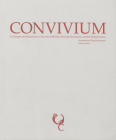
Convivium-Exchanges and Interactions in the Arts of Medieval Europe Byzantium and the Mediterranean
Illuminating the Intersections of Medieval Art and CultureConvivium - Exchanges and Interactions in the Arts of Medieval Europe Byzantium and the Mediterranean, published by Masarykova University, is a dedicated platform for scholarly discourse in the fields of Classics, History, and the Visual Arts and Performing Arts. Since its inception in 2017, this journal has aimed to enrich our understanding of the intricate cultural interconnections between medieval Europe, Byzantium, and the Mediterranean region, standing as an important resource for researchers, professionals, and students alike. While the journal is published in an open-access format, enabling wider dissemination of knowledge, it currently holds a respectable Q3 quartile ranking across its categories in 2023, reflecting its increasing reputation in the academic community. Although the journal is based in Belgium, its scholarly reach is truly international, as evidenced by its varied contributions. Engage with Convivium to explore the rich tapestry of medieval art and thought, and contribute to the ongoing dialogue about our shared cultural heritage.

Iconographica
Connecting Art and Culture in Scholarly ExplorationIconographica is an esteemed journal published by SISMEL EDIZIONI GALLUZZO, dedicated to the exploration of cultural narratives through visual arts and performing arts. Based in Italy, this journal has been providing a platform for scholarly discourse from 2015 to 2023, and it serves as an important resource for researchers, professionals, and students interested in these interdisciplinary fields. Although indexed in the Q4 quartile for both Cultural Studies and Visual Arts, this journal offers valuable insights that encourage the examination and understanding of visual culture. While currently operating without an open access model, its rigorous peer-review process ensures high-quality academic contributions that reflect the evolving dynamics within these areas of study. Set against the backdrop of a rapidly transforming cultural landscape, Iconographica aims to foster engagement, inspire innovative perspectives, and cultivate a deeper appreciation for the interplay between culture and visual representation.